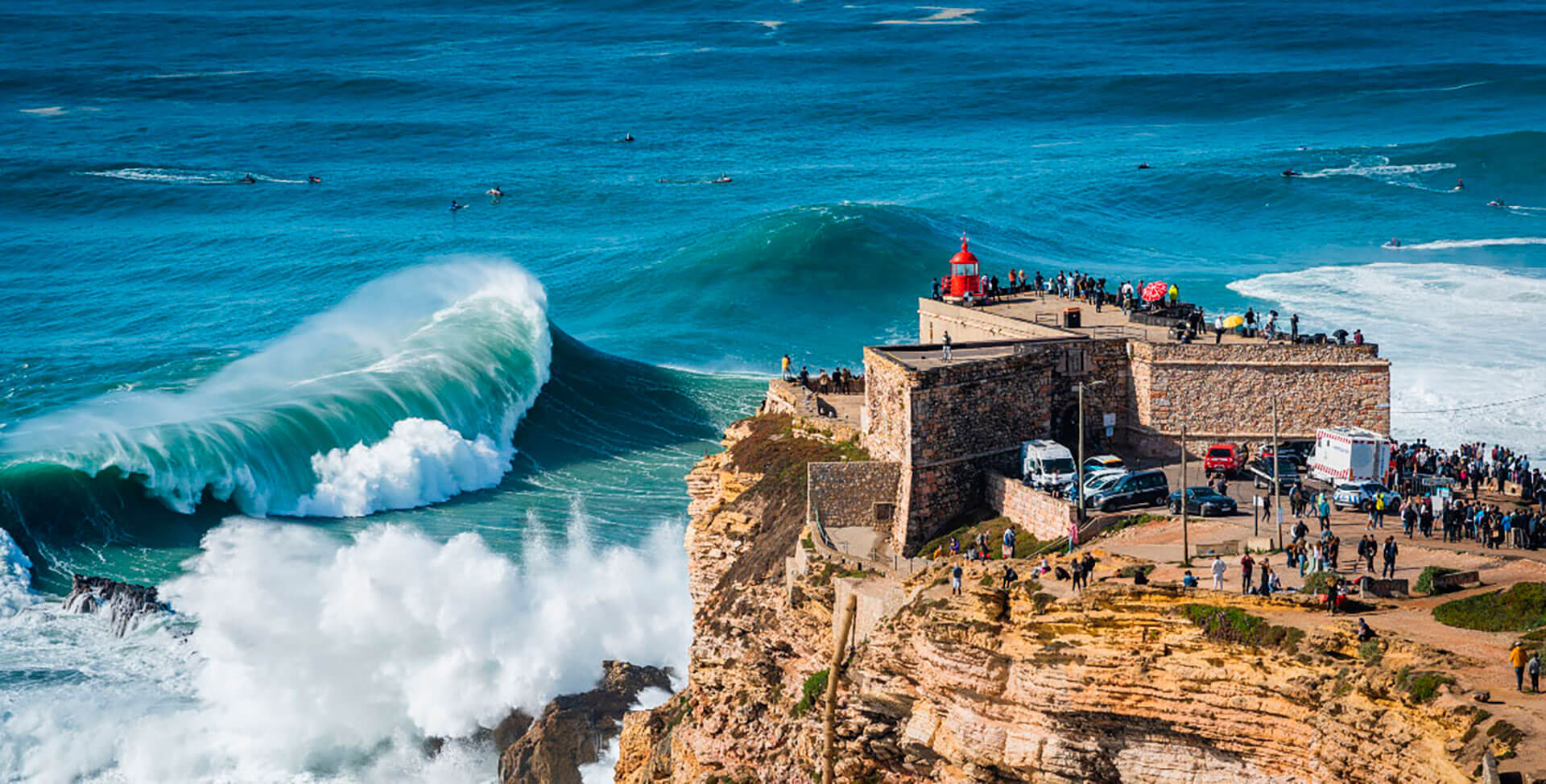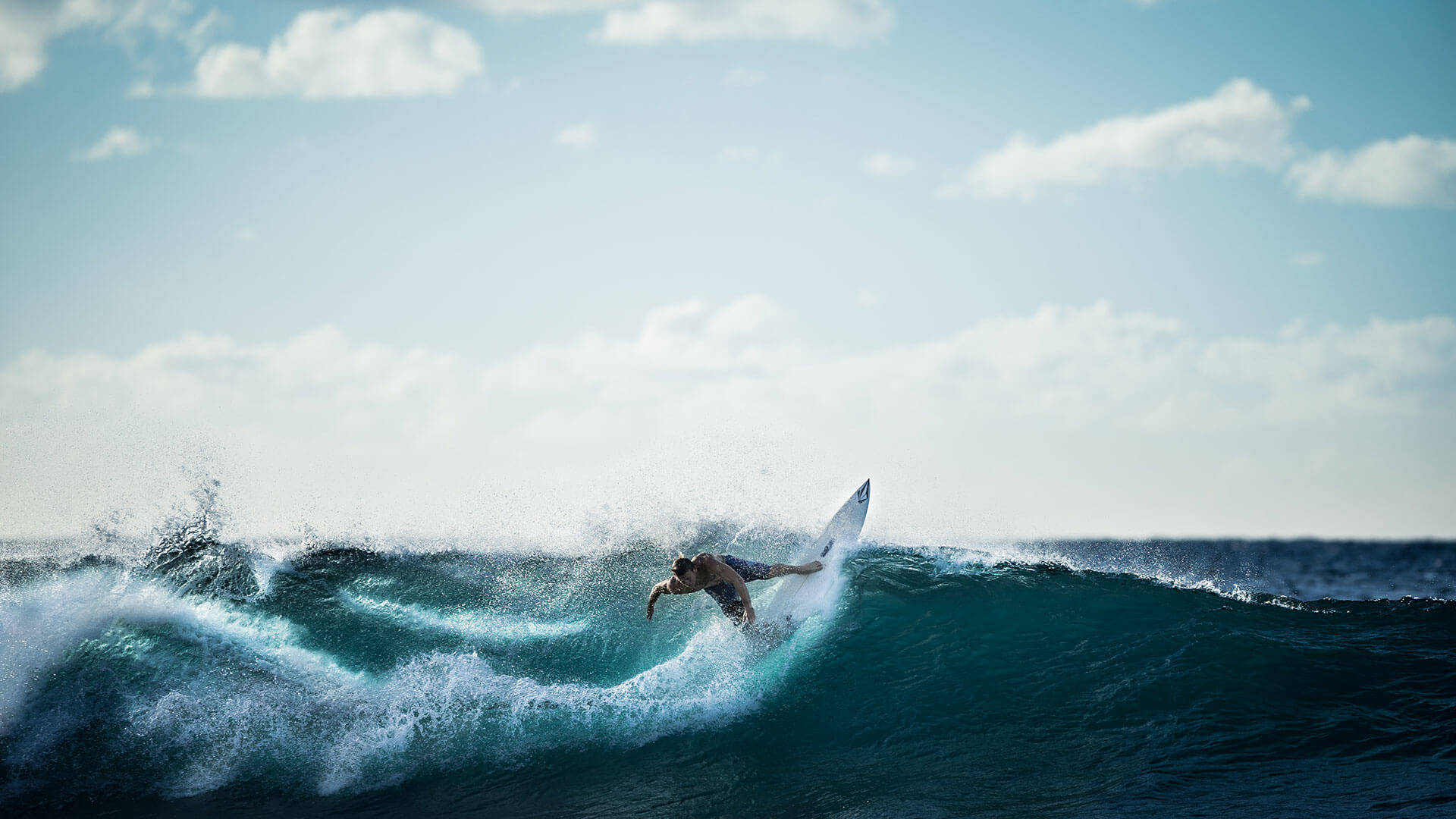
Surf Foil or Hydrofoil: Everything you need to know
Lately we see around us how different disciplines related to foiling are practiced, it is something that is undoubtedly fashionable for a couple of years.
Foil surfing does not have a kite to propel you like other similar sports, so it can be a little more complicated to learn. Next, we will explain what it is, its origin, difficulty and many more curiosities about the hydrofoil.
Table of contents
What is surf foil?
The hydrofoil or surf foil is a perfect mix between surf and foil technique, composed of a mast with a wing that is placed under the board (instead of having a keel as in the surfboard we have this wing).
Thanks to this aquatic discipline you will be able to surf in unimaginable places where you could not surf before with a simple surfboard.
We call foil to the underwater fin that connects the water with our board. It has a flat or curved wing-shaped surface that serves to lift any foil or board and makes you stick out of the water as speed increases, allowing you to surf above the waves.
How does hydrofoil work?
There are two fundamental characteristics that you must take into account:
Speed
When our board picks up the necessary speed to start the displacement, the foil makes the board rise above the water. When that happens we can partially see it.
This action decreases the friction of the board with the water, so we have less opposition and we are allowed to keep all this speed easily.
Therefore, when we are above the water, simply with this speed we can stay floating even without surfing the wave.
We can even surf smaller waves or those that never break, that we would not be able to catch with a simple surfboard. This is what makes foil surfing so special and addictive at the same time.
Balance
As well as speed, another key aspect to master foil surfing is balance. And it is necessary to know some aspects of the inclination such as:
If you lean forward, applying weight on your front foot, the wing will dive deeper into the water so the speed will decrease.
If you lean backwards placing weight on your back foot, the wing will go upwards creating more support and this is what helps us to propel normally.
Is it difficult to learn to foil surf?
Normally those who embark on this hydrofoil or foil surfing adventure usually come from other related water sports, so the learning curve will be less than if it is your first time venturing into any water sport.
Even so, you will have to "re-learn" a little bit.
A tip that will make it easier to learn to surf with foil, especially for the issue of getting up on the board without falling at the time, is to have some kind of help to get the necessary speed.
That is, to be propelled by any boat, such as a jet ski, as it will give you the balance and speed necessary to be able to surf the waves.
Compared to surfing, this sport requires a plus of balance and skill, added to a good physical shape to be able to control the movement of the board on the water.
What size foil should I use?
The size of the foil is a very important point as it is related to the behavior of our board. It is composed of a mast and a wing with different proportions.
Mast
It is fundamental to differentiate if you are an amateur or an expert. If you are starting out, it would be best if it is not too big (long) as it is more difficult to control, although it will give you a better performance, so the more you learn, the more you can change it for one of more centimeters.
It also depends on the depth where you are going to practice this activity. Our recommendation is that you should do it in deep water, but if you have no choice but to do it in shallower spots you can choose a mast smaller than 60cm. This mast size is ONLY recommended in shallow water.
- 60-75 cm: Perfect mast to start foil surfing. You will be able to climb above the water without being too high and the difficulty and danger will be much less.
- 75-100cm: Once we go improving and having more confidence with our foil we can go taking masts of greater centimeters. With these measures we will have a better performance and we will be able to rise much more and to catch more speed.
Wing
Normally in a hydrofoil we will find two. The front wing and the rear wing.
- The front wing is the one that rises when you pick up speed. The smaller this wing is the faster you will be. Therefore, we recommend to start with a larger and wider spoiler to give you more stability and less swinging when in motion.
- The rear wing is also known as the stabilizer, as it is what gives stability to our foil and board. This part is the one that does not protrude and is submerged in the water.
As in the front part, the bigger it is, the more stability we will have and it will be better for beginners as we will be able to keep in slower speeds. Whereas, if our stabilizer is smaller, we will be much faster so we will have to be more technical and precise.
What type of board should I use with a foil?
Preferably they should be flat and short. This is because their main function in foil surfing is to go "flying" and not stay long on the water. This is why it is not possible to take any board from other water sports and put a foil on it to turn it into a hydrofoil board.
There are boards that you can get in the market that allow you to do more than one activity since they have the essential measurements and materials for it.
In general, a foil board should be quite bulky and the tip is usually fatter or rounded not as sharp as the normal surf, they are more similar to the longboard surf (to get an idea). The difference between expert and amateur is in the weight and width of the board.
If you are just starting out we recommend a heavier board that will be a great help in buoyancy and the wider the better to have maximum control over it.
However, if we talk about a narrow board, it will be more sensitive to any kind of movement, ideal to have a greater inclination and more speed.
Can I use a foil on any type of wave?
Yes, you can literally catch any kind of wave. What hydrofoil has achieved is that you can surf any wave and access breakers and new waves that with another sport we couldn't do it. You can go on any surface, even when the sea is calm.
Obviously, according to our practice and experience we will decide to surf one type of wave or another, but it is possible to do it in almost all possible situations, breaking that barrier of "surfable" waves that we had with surfing.
Big waves, small waves, right, left, with a breaker that generates foam, with minimal ripples, even without waves we can foil surf.
Do I need to have surfing experience to use a foil?
Necessarily no. It might be highly recommended because, if you have experience in water sports such as surfing, it is likely to be easier for you to learn to master foil surfing.
We could say that hydrofoiling is more difficult than traditional surfing, because of the physics and that it could be a bit more dangerous. That's why the more you master this kind of situations in the sea the better and easier it is to learn it as a whole.
In short, it is not necessary to have experience, but our advice is to try before with traditional surfing. The foil adds a more complicated technology, so any previous practice and knowledge about a sport like surfing will be of great help.
What is the cost of a foil?
The main disadvantage of foil surfing would be the cost of materials. Generally, purchasing a foil can be around 1,000 € and if we are talking about high quality professional components can easily exceed 3,000 €.
The price is high due to all the elements that have to be purchased because they are sold separately.
On the one hand, if you do not have any board that you can use, you will have to buy one. Besides this, you will have to buy the "keel" or foil mast, whose price varies depending on the measures and materials used for its manufacture.
The most common materials in this case are carbon fiber (more expensive) and aluminum.
Because it is becoming a fashionable activity, we can easily find complete packs for amateurs or experts.
How do you install a foil on a surfboard?
The assembly is relatively uncomplicated. In less than half an hour we could have it all assembled, the essential thing is to follow the correct order. When you buy the foil it will come in the following pieces: mast base, mast, fuselage, front and rear wing.
First, we attach the mast to the mast base with screws. Once this step is finished and the mast is completed, we have to assemble the fuselage. We will fit the fuselage on the mast to later, put the front wing in the fuselage.
It remains to place the stabilizer or rear wing that can be more complicated if you do not know the exact place where to place it. We must place it under the fuselage to screw it, the wings must stay upwards.
We would already have our foil mounted, the last step would be to fit it to the board. The foil will be placed on top of the rails (they are located on the edges, they are the rafter area between the top and bottom of the board).
What are the risks associated with foil surfing?
The main risk is the hydrofoil. The foil is much more dangerous than a normal surfboard keel, which in itself can cause certain problems.
If we take into account that we will be new to this and the danger that can have the foil, we must be very cautious.
The foil wing can be very harmful to us as it is made of metal and is quite sharp and large.
It is not like the keels of a surfboard, so it can be very dangerous for us if we do not control it, especially when combined with the speed that makes it unpredictable and in a bad fall or tumble can cause serious injuries to those around.
We could cover ourselves with helmets, vests or wetsuits for greater safety.
Finally, it is crucial to comment that we have to start foil surfing in deep areas (due to the size of the foil) and where there are not many swimmers.













_v2.svg)
_v2.svg)









_v2.svg)


